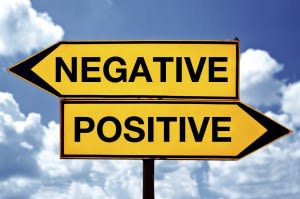
Negative Gearing Property Investment
What is Negative Gearing Investment Property?
Put simply, negative gearing is a tax benefit offered to investors on their borrowing costs.
If your borrowing costs exceed the revenue gained from your investment, you are entitled to claim those losses against your total income.
The benefit of gearing is that it allows you to own investments that would normally be out of reach, giving you the opportunity to make a greater return on your outlay.
For instance, Jenny uses her $50,000 deposit to borrow $350,000 and buy a $400,000 investment property. At 8% the annual repayments total $28,000 on an interest only loan. The rent she receives from this property is $400 per week, or $20,800 per year – leaving her out of pocket by $7,200 per year.
Other expenses include rates, levies and maintenance costs, which add up to $3,500 per annum. Jenny has now spent $10,700 to own that asset over and above the income she has received for it.
So when it comes time for Jenny to do her taxes she will be able to reduce her taxable income by $10,700. That’s negative gearing.
But wait there’s more!
Jenny’s property was built in 1995 and Washington Brown Quantity Surveyors has advised Jenny that she can claim $8,000 in the first year for depreciation. 
So now Jenny can tell the ATO to reduce her taxable income by $10,700 plus the $8,000 in depreciation allowance (a total of $18,700).
The reason we have separated the depreciation from other out-of-pocket expenses is because Depreciation Allowances are not reliant on whether the property is negatively geared, positively geared or cash flow neutral.
Is it worth is?
At the end of the day, it’s called negative gearing because it involves a loss.
So why would you want to spend more money on your investment than it pays you to own it?
Most investors are willing to accept a loss in income if they believe they will be compensated by capital growth in the future. But you must be able to fund this shortfall while you wait for the investment to appreciate in value.
You also need a taxable income from which this loss can be negatively geared against. And the higher your income, the higher the benefit will be.
For instance, if Jenny were on the highest tax rate of 45 percent, her $18,700 loss has now resulted in an $8,415 tax refund ($18,700 x 0.45% = $8,415). So in real terms it has only cost Jenny $2,285 ($10,700 – $8415 = $2,285) to maintain this investment in that particular year.
So for approximately $44 per week, Jenny owns an asset that will hopefully increase in value. If her property appreciates 5% in the first year, that’s an increase of $20,000 with a $2,285 holding cost.
Sounds good doesn’t it!
But the reverse applies – if Jenny’s property goes down 5% then she’s lost $20,000 off the market value of that investment. 
At the end of the day, there is no point negative gearing into an asset class that decreases in value.
But history has shown that if you buy well-located property at the right price and hold it long term, it has been a great investment.
And if you can do that whilst keep the holding costs to a minimum – then your gains are magnified.
Can you afford it?
MoneySmart, the consumer website of the Australian Securities and Investments Commission, suggests the following three things to help make negative gearing succeed:
- Buy good quality investments, preferably with a reliable and rising income stream.
- Borrow conservatively so you can survive interest rate rises and possible loss of income.
- Maintain reliable income from your job or other sources to cover your borrowing costs, especially in the early years.